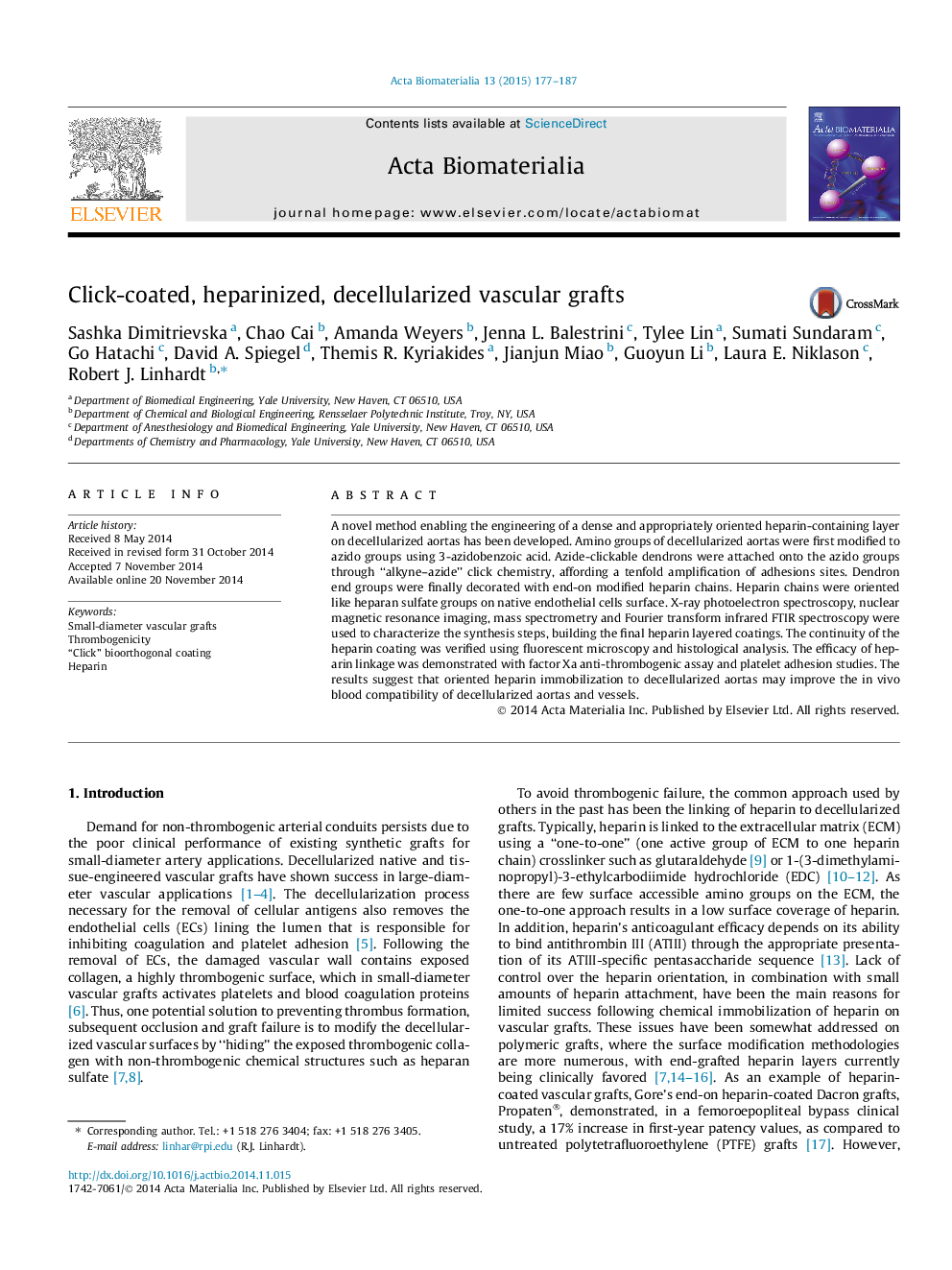| Article ID | Journal | Published Year | Pages | File Type |
|---|---|---|---|---|
| 6483715 | Acta Biomaterialia | 2015 | 11 Pages |
Abstract
A novel method enabling the engineering of a dense and appropriately oriented heparin-containing layer on decellularized aortas has been developed. Amino groups of decellularized aortas were first modified to azido groups using 3-azidobenzoic acid. Azide-clickable dendrons were attached onto the azido groups through “alkyne-azide” click chemistry, affording a tenfold amplification of adhesions sites. Dendron end groups were finally decorated with end-on modified heparin chains. Heparin chains were oriented like heparan sulfate groups on native endothelial cells surface. X-ray photoelectron spectroscopy, nuclear magnetic resonance imaging, mass spectrometry and Fourier transform infrared FTIR spectroscopy were used to characterize the synthesis steps, building the final heparin layered coatings. The continuity of the heparin coating was verified using fluorescent microscopy and histological analysis. The efficacy of heparin linkage was demonstrated with factor Xa anti-thrombogenic assay and platelet adhesion studies. The results suggest that oriented heparin immobilization to decellularized aortas may improve the in vivo blood compatibility of decellularized aortas and vessels.
Related Topics
Physical Sciences and Engineering
Chemical Engineering
Bioengineering
Authors
Sashka Dimitrievska, Chao Cai, Amanda Weyers, Jenna L. Balestrini, Tylee Lin, Sumati Sundaram, Go Hatachi, David A. Spiegel, Themis R. Kyriakides, Jianjun Miao, Guoyun Li, Laura E. Niklason, Robert J. Linhardt,
